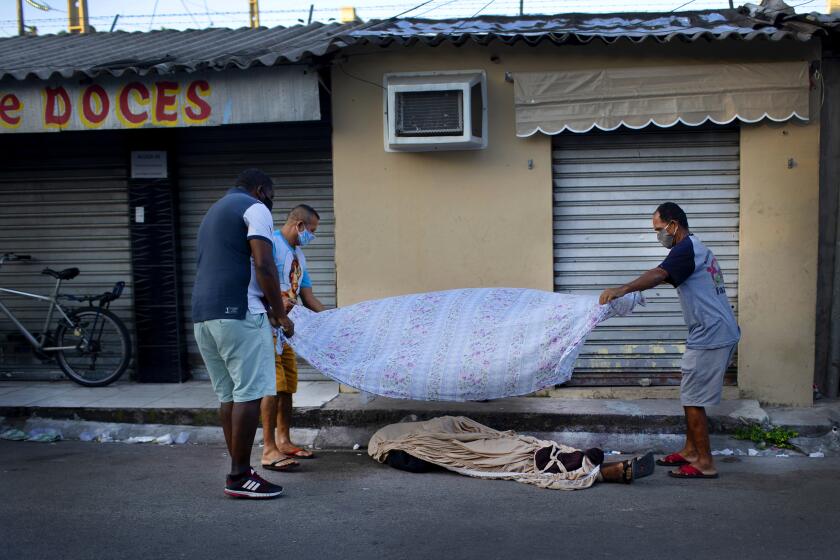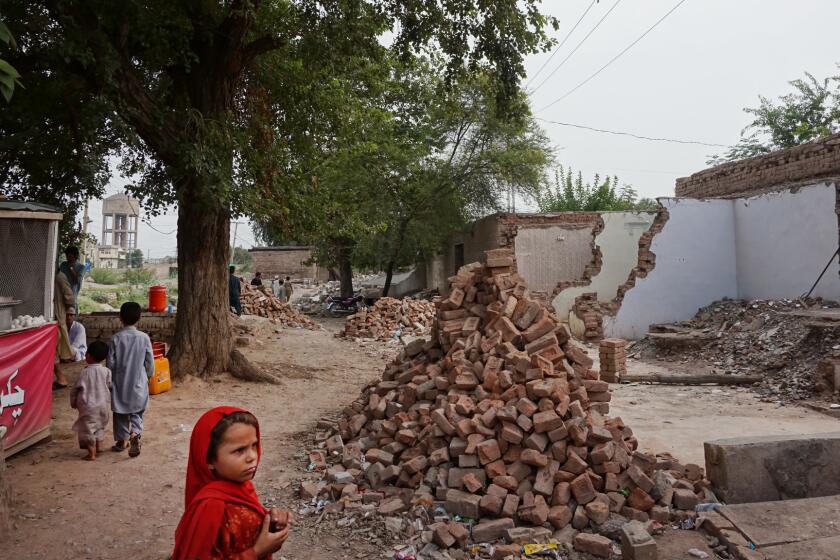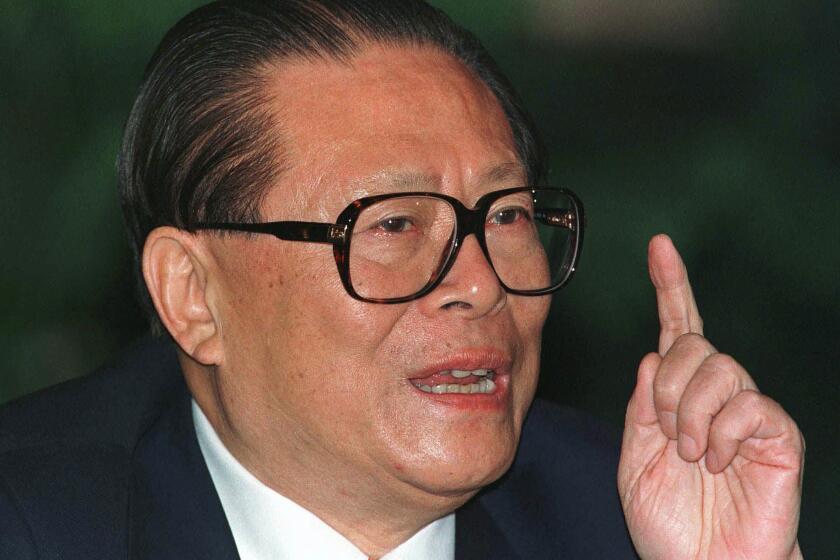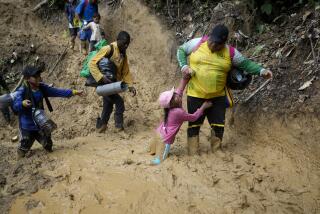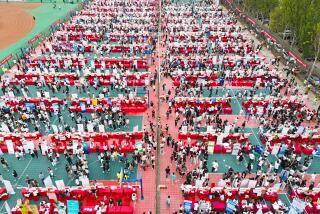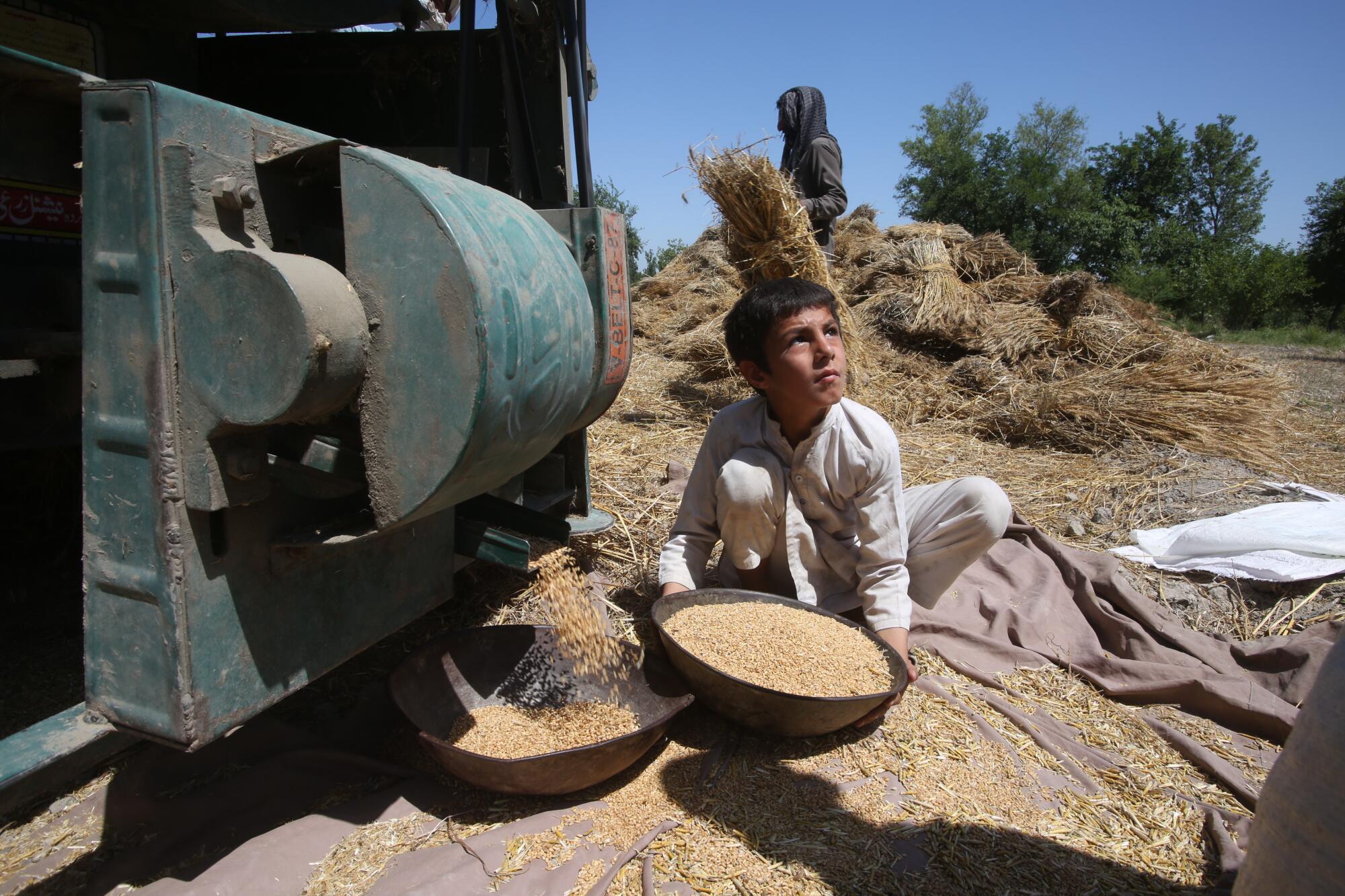
PESHAWAR, Pakistan — The boys struck out from their village in Pakistan’s rugged tribal belt and came to this frontier city to work at Maula Khan’s drink stand, a wooden cart shaded by an umbrella on a road bustling with migrants, war refugees and swerving rickshaws.
Umar Gul and Muhammad Siraj stood in the 108-degree heat, pouring freshly squeezed lemons mixed with jaggery into steel cups for 12 cents a serving. They were far from home, but when the coronavirus pandemic closed their elementary school in March, their families needed them to work.
“I decided to support my parents,” said Umar, a 14-year-old who was in the fourth grade. His 13-year-old cousin Muhammad, whose father owns the lemonade cart and demanded the boys join him, was in the grade below. Neither is counting on returning to school when classes resume.
“I’m not sure,” Umar said, shrugging, his shoulders slumped under a loose-fitting shalwar kameez. “My father doesn’t have enough money for my education.”
Experts warn that the COVID-19 pandemic could force millions of children in developing nations out of classrooms for good and into the workforce, reversing two decades of hard-won progress against underage labor and exposing vulnerable girls and boys to hazardous conditions, physical stress, emotional trauma and exploitation.
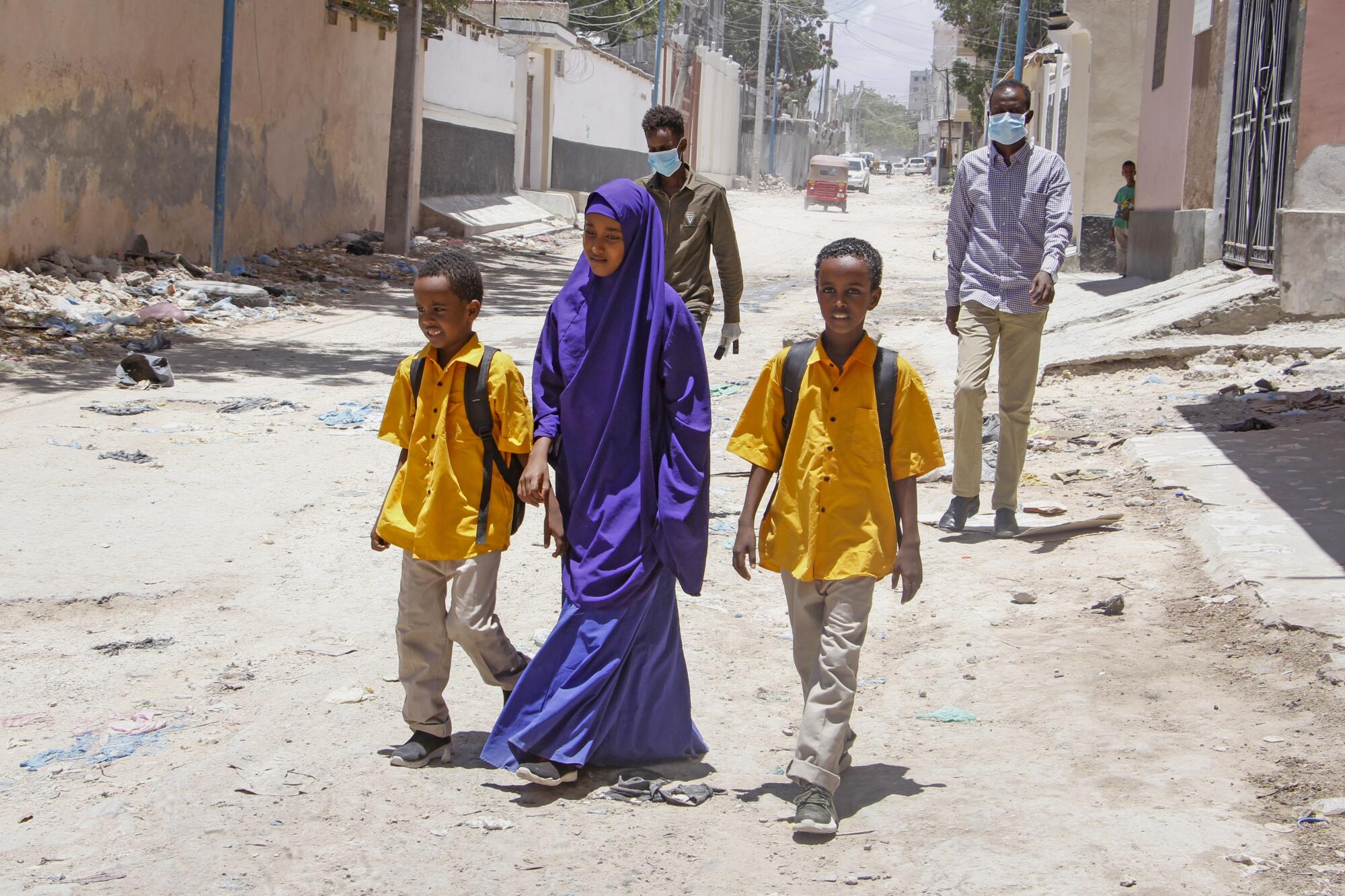
“In precarious households that are economically vulnerable, they have to make a decision every day, how to spend their income and how to generate income,” said Cornelius Williams, associate director of child protection at UNICEF.
“If these families go below the poverty line, they may have to make these ugly choices.”
Months-long economic lockdowns and the threat of a prolonged global recession have worsened hardships for poor families, especially those who depend on informal jobs and lack social protections. In low- and middle-income countries, the number of children living in poverty could rise 15% by the end of 2020 to 672 million, according to UNICEF and Save the Children, an international charity.
Nearly two-thirds of these children live in Africa and South Asia, in countries where child labor is entrenched despite legal prohibitions, rising school enrollment and economic modernization. The International Labor Organization estimates there are 152 million victims of child labor worldwide working as farmhands, herders, miners, weavers, shop assistants, domestic help — often as part of a family business.
The United Nations predicts that a global recession will reverse a three-decade trend in rising living standards and thrust half a billion people into extreme poverty.
Child rights advocates have spent decades persuading governments, employers and parents that child labor is not only dangerous but also prevents societies from growing more educated and creating better-paying jobs.
The campaign has worked: About 100 million fewer children are working today compared with 20 years ago, according to United Nations agencies.
The U.N. had set a target of eliminating child labor by 2030. But experts worry that the economic shock will force parents to choose between their children’s future and daily survival.
“The danger is that we will lose that trajectory,” Williams said. “That target would become impossible.”
Although some medical evidence suggests that children are less susceptible to COVID-19 infections than adults, the pandemic’s toll on young people goes beyond health.
In war-torn Yemen, humanitarian aid is drying up, threatening children with starvation. Reports of child abuse are increasing in developed nations such as Singapore and the U.S. Pediatricians warn that keeping kids out of school could be worse in the long run than the disease itself.
Worldwide, more than 1.5 billion students have been affected by school closures. Like many countries, Pakistan tried to shift to online learning and televised classes.
But in the rugged, impoverished tribal zone along the Afghan border, such measures were in effect impossible.
A frail Shah Khan Kukikhel was walking through the rubble of what used to be his brother’s home.
Internet access in the region is almost nonexistent: Wi-Fi connections are prohibitively expensive, and the government has blocked mobile 3G and 4G service since 2016 as part of its war against a long-running insurgency. Most households get only three to four hours of electricity a day.
Even before the pandemic, Pakistan had some of the world’s worst education statistics, with 44% of school-age children not attending classes. Education through age 16 is free under the law, but the cost of books, uniforms and other expenses weighed on families in the tribal belt.
With more than 200,000 COVID-19 infections and low testing rates, Pakistan has not said when schools will reopen.
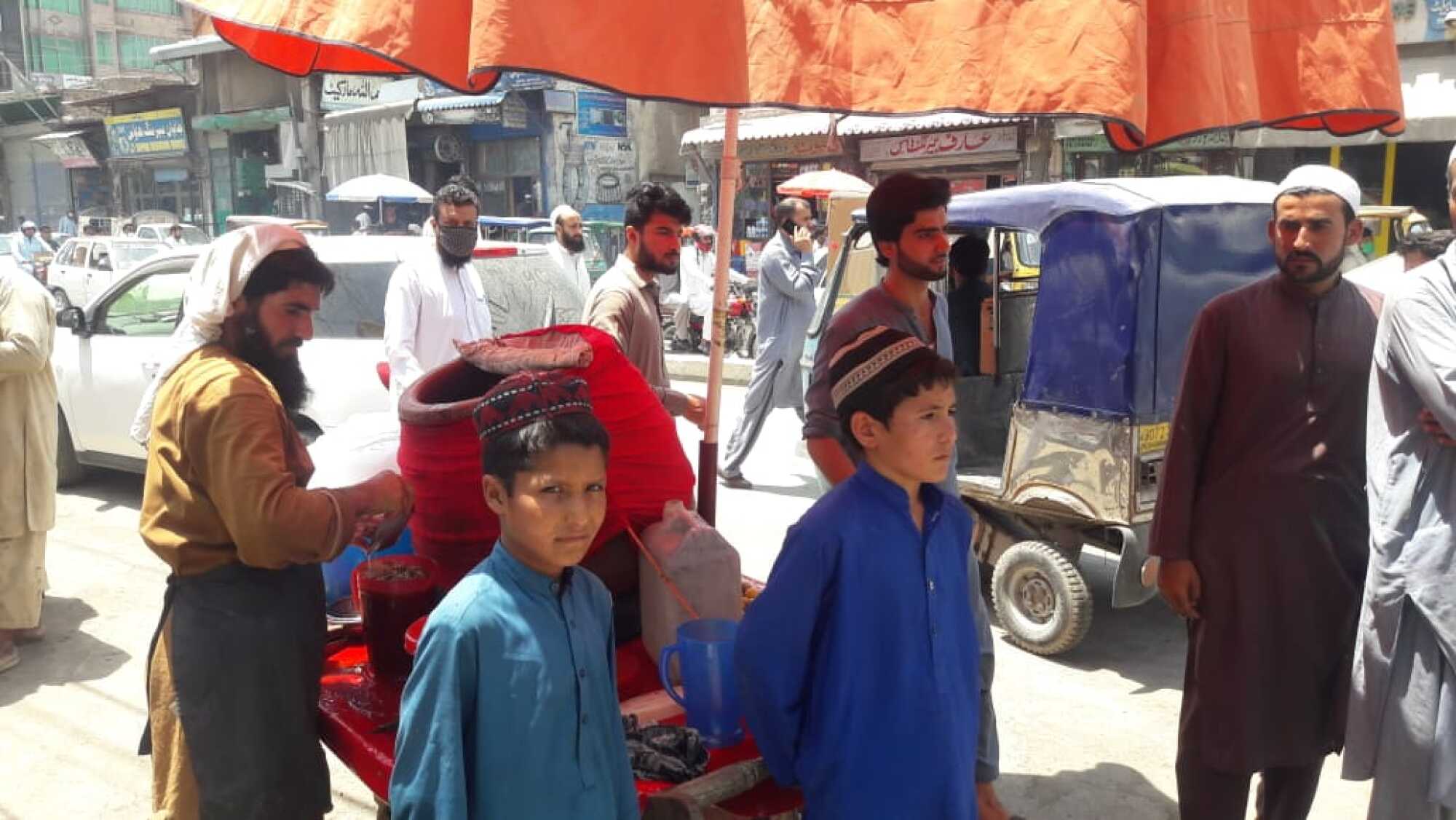
Umar and Muhammad, who started school years late because their families had been displaced by fighting in Bajaur, were both good students, fond of Urdu language classes, with hopes of enlisting in the army.
But when the shutdown hit, the family’s calculation was simple.
“We are poor,” said Muhammad’s father, Maula Khan, “and we need extra hands to help us earn.”
The drink stand generates about $3.50 a day for the family of seven to live on in Peshawar, home to large numbers of migrants from the tribal districts and refugees from the war in Afghanistan. Maula Khan, his ankles swollen from standing beside the cart all day, said working was the best thing for the boys’ future.
“This will train them to start their own lemonade stands,” he said.
More stories from Asia
The legal working age in Pakistan is 15, although the law is rarely enforced by provincial authorities. In Khyber Pakhtunkhwa province, which includes Peshawar, labor inspectors even lack funds to conduct site visits, according to a 2018 report by the U.S. Labor Department.
Pakistan hasn’t carried out a child labor survey since 1996, when 3.3 million children ages 5 to 14 were found to be working. Activists say that fewer children today toil in industrial jobs, but they continue to be employed in large numbers in agriculture and — particularly for girls — as domestic help, where abuse is common.
“Socioeconomic inequities will increase after the pandemic, and it will be worse for the most vulnerable,” said Iqbal Ahmad Detho, a member of Pakistan’s national child rights commission.
A relief package introduced by Prime Minister Imran Khan’s debt-ridden government gave 12 million families a one-time payment of about $71. That amount, less than the monthly minimum wages set by provinces, was widely denounced as inadequate.
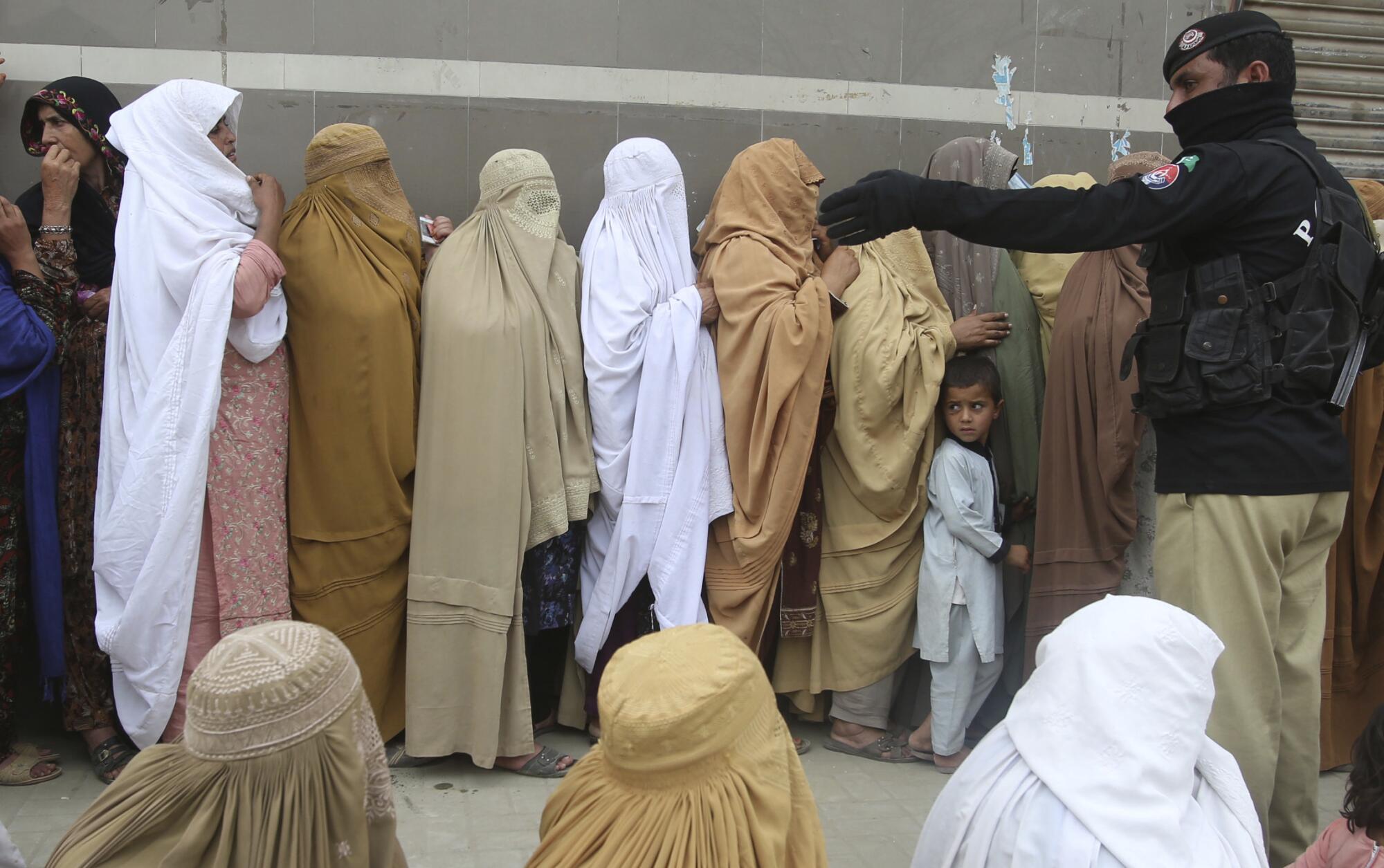
The government projects that at least 12 million people will lose their jobs and 10 million will fall below the poverty line — an 18% increase — as a result of the pandemic.
“We are not against educating our children, but poor families rely on child labor to pay the bills,” said Hamid Khan, who runs an auto repair shop in Peshawar’s busy Shoba Bazaar.
As he spoke, a 14-year-old employee was busy unscrewing nuts and bolts and washing car parts. The boy’s wage: less than $1 a day.
Lately, Hamid Khan said, the number of children working in the market has risen noticeably.
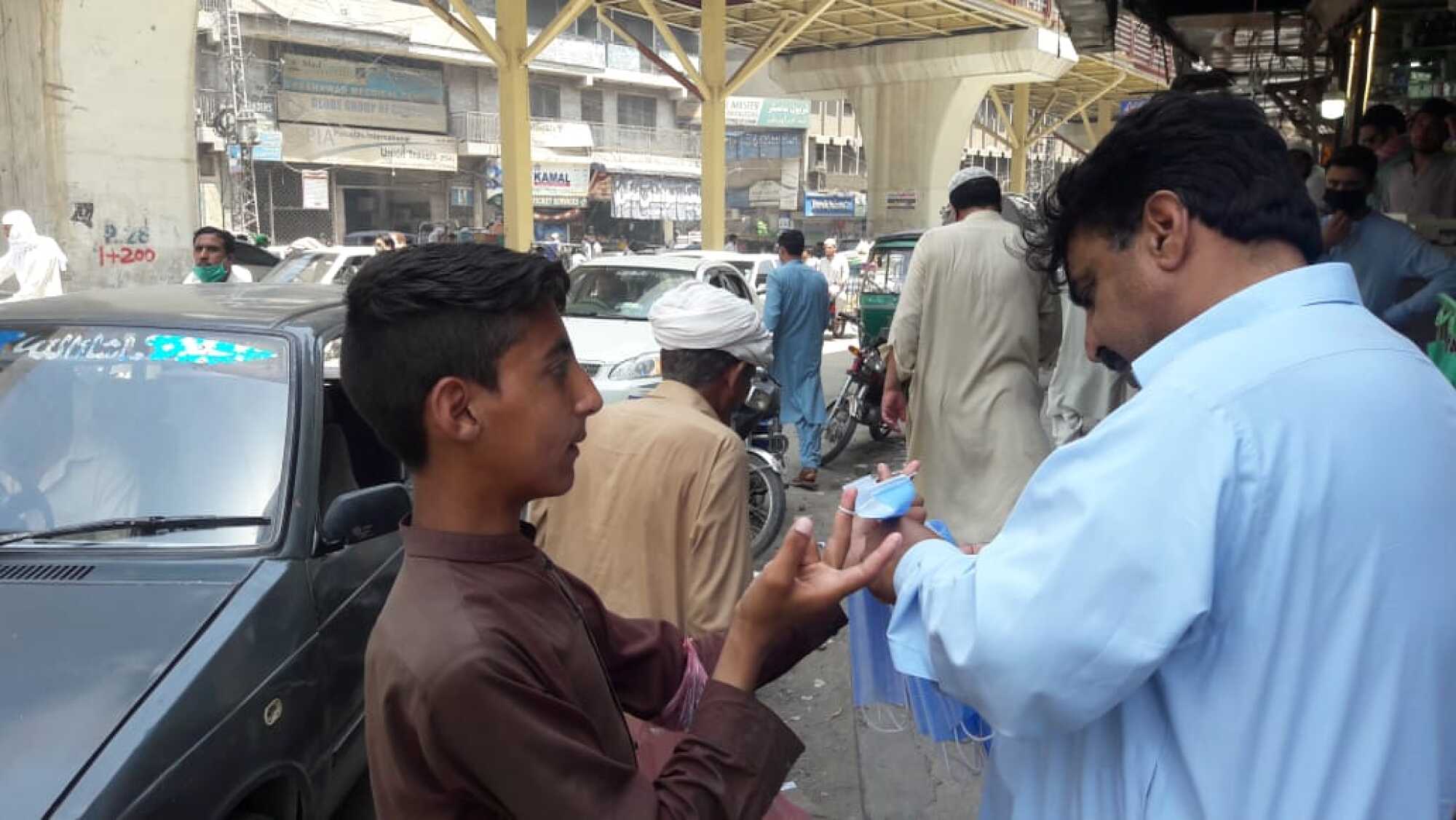
A short walk away in the city’s historic Khyber Bazaar, 13-year-old Junaid Khan stood on a sidewalk looking for customers. When schools closed, he‘d asked to join his father as a street vendor, selling masks.
Now Junaid sells about 50 blue surgical masks a day, pocketing roughly $2. He said he won’t go back to school, although he plans to attend Quran classes in the evenings.
His father, Rahim Dad, who sells masks and natural toothbrushes made from tree bark, regretted that his eldest son had to work.
But with four daughters married off and two younger boys at home, the father said, the family was just trying to survive.
“God willing,” he said, “I will do my best so that my other sons get an education.”
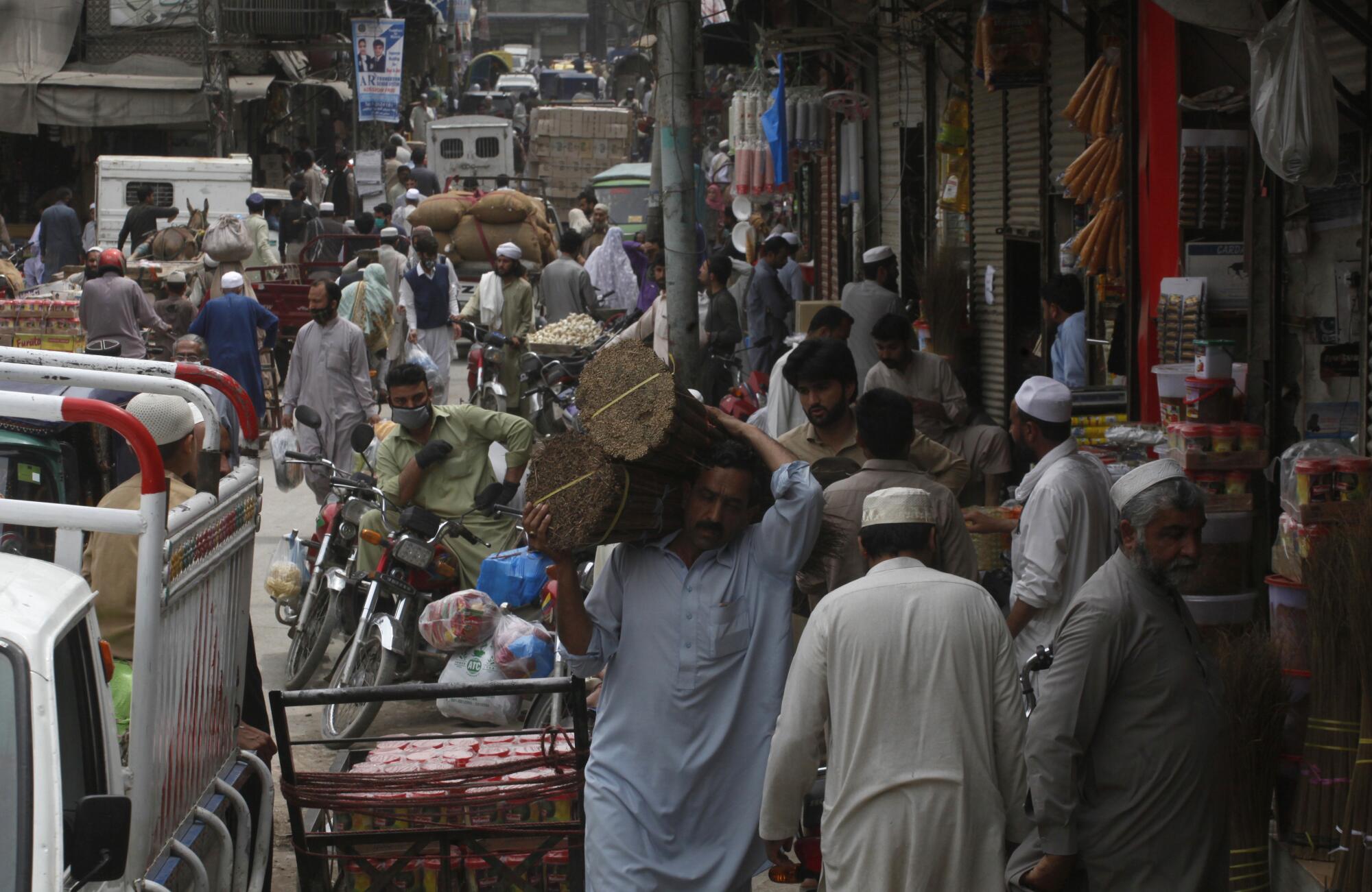
Special correspondent Ali reported from Peshawar and Times staff writer Bengali from Singapore.
More to Read
Sign up for Essential California
The most important California stories and recommendations in your inbox every morning.
You may occasionally receive promotional content from the Los Angeles Times.
